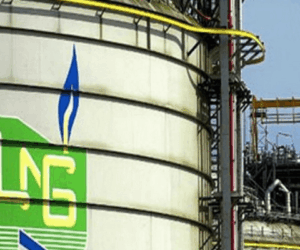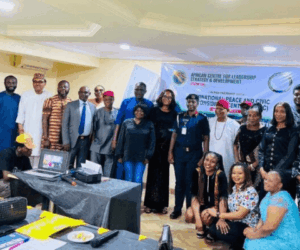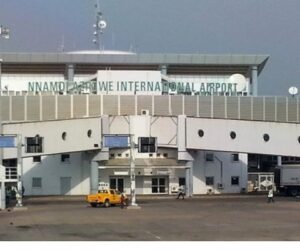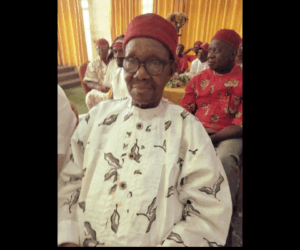…Income gaps belie macroeconomic progress, gains
…Stagnant wage neutralises cooling inflation – Economists
…Tinubu insists there’s bright light at end of the tunnel
For the first time in years, Nigeria’s economic indicators are pointing in the right direction. Inflation has slowed for five consecutive months, the naira has rallied strongly against the dollar, and foreign reserves are at their highest level since 2019. At the policy level, the Central Bank of Nigeria (CBN) has even cut its benchmark interest rate for the first time in five years, signalling confidence that the worst of the storm is over.
Yet, on the streets of Lagos, Abuja, Kano, Owerri, Jos, Kaduna, and Port Harcourt, the story is different. In markets, traders confirm that prices of rice, yams, beans, garri, and maize have dropped from their peaks, while bread, milk, and beverages have stabilised. But for shoppers, the sigh of relief remains muted.
“A loaf of bread is still N1,500,” says Esther, a mother of three who teaches at a private secondary school. “Yes, it is no longer increasing every week, but it is still double what I used to pay before 2023. My salary has not really changed.”
This paradox, improving macroeconomic numbers but worsening household realities, captures the dilemma facing Nigeria’s fragile recovery.
Between statistics and reality
The headline inflation rate, which peaked at 34.80 percent in December 2024, decelerated to 24.50 percent in January after the National Bureau of Statistics (NBS) rebased its inflation basket. By August 2025, inflation had further slowed to 20.12 percent. Food inflation, which accounts for nearly half of the index, fell to 21.87 percent in August from 22.74 percent in July.
At the same time, the naira has appreciated, rising from over N1,900 per dollar at the parallel market in 2024 to about N1,490, its strongest level in 15 months. Foreign reserves now stand at $42.3 billion, the highest since September 2019.
“The economy has turned the corner, there is a bright light at the end of the tunnel,” President Bola Tinubu declared at the coronation of the 44th Olubadan of Ibadan on Friday.
But as many Nigerians would argue, the tunnel still feels too long.
Why the relief is missing
Economists stress that disinflation, slowing inflation, is not the same as deflation. Prices are still going up, just not as quickly as before.
“The reason lies in the distinction between the inflation rate and the actual price level,” explained Abdulfatai Adedeji, a research fellow at the Centre for the Study of Economies of Africa (CSEA). “While the rate of increase is moderating, prices themselves have not declined. The CPI has continued to climb steadily, rising from 110.7 to 126.8 within the same period (January-August), reflecting that the cost of goods and services is still going up.”
He added that government interventions designed to cushion the impact have been too limited. “As of March 2025, just 5.5 million of the 15 million targeted households had benefitted from cash transfers, receiving up to three payments of N25,000 each. This limited coverage underscores why the majority of Nigerians are yet to experience tangible welfare improvements despite the statistical decline in inflation.”
Simon Samson, an economics lecturer at Baze University, echoes this view: “Nigerians are not feeling any relief because prices are still climbing. Disinflation is not deflation, so prices are still going up but at a slower pace than before. Cost of living is still very high with inflation at 20.12 percent as shown in August CPI numbers. When inflation was half this in Europe, people were embarking on cost-of-living crisis demonstrations. This clearly demonstrates that relief is yet to come.”
Read also: Discos’ high tariff, epileptic power supply spark angst
The income gap: A growing burden
Beyond inflation, stagnant wages and widening inequality are at the heart of Nigeria’s economic pain. Even though the minimum wage was raised from N30,000 to N70,000 in July 2024, implementation remains patchy. Many state governments have not adopted it, and businesses in the private sector, struggling with higher operating costs, say they cannot afford significant pay hikes.
“The role of stagnant wages and income disparity is significant in neutralising the impact of easing inflation,” Samson, who heads the consultancy ARKK Economics and Data Limited, explained. “In spite of the nominal increase in Nigeria’s minimum wage in 2024, real wages are at historical lows.”
Adedeji shares a similar perspective: “For households whose incomes have hardly grown, the steady rise in prices makes it harder to afford the same goods and services as before.”
Transport fares, school fees, and rents in urban areas have more than doubled since 2023. For many households, food and housing now swallow up nearly all monthly earnings.
“Nigeria has become a ‘sachet economy’ and purchasing power has been eroded and that has erased the middle class,” observed Adetilewa Adebajo, CEO of CFG Advisory.
According to him, inflation must fall drastically before Nigerians feel real relief. “Inflation needs to slow to at least 12 percent for us to see 8 to 10 percent growth and which is really where we need to be targeting. In order to bring people back to the middle class, inflation needs to be at 12 percent, then we will begin to feel the impact.”
In what he titled “Your pocket, purse and price”, Bismarck Rewane, chief executive officer (CEO), Financial Derivative Company Limited (FDC), recently presented a table which showed prices of food in 2020, 2024 and 2025.
According to him, while 50kg rice was N28,000 in 2020, it was N120,000 in 2024 and now N80,000. Again, 50kg of garri was N13,500, N38,000 and N25,000 respectively. In 2020, PMS (petrol) was N145; in 2024 N1,100, and N865 in 2025. Exchange rate (parallel) was N440/$, N1,700/$ and N1,520/$ respectively.
From the above, analysts speak in tandem that it is not yet uhuru for the masses of Nigeria, even though it seems that prices of food items seem trending downwards.
What can be done?
Experts agree that macroeconomic stability must be translated into tangible household relief. For Adedeji, earlier quoted, three steps are key: “First, social protection must be scaled up by expanding cash transfer programmes to cover all vulnerable groups, with stronger monitoring systems to ensure that the intended beneficiaries actually receive support.
“Second, the agricultural sector, which has the greatest impact on food prices and household welfare, needs targeted investment. This includes modern storage facilities, reliable irrigation, improved access to inputs, measures to reduce climate risks, and protection from exploitation by non-state actors and security agents. Strengthening agriculture will boost productivity, create jobs, enhance food security, and help bring down food prices, which form the largest component of the inflation basket.
“Finally, small and medium-sized enterprises in industry and services must be supported through soft loans, tax exemptions under the Nigeria Tax Act 2025, capacity-building initiatives, and investment in infrastructure.
These measures will empower businesses to expand, create jobs, and raise incomes, thereby bridging the gap between slowing inflation and Nigerians’ purchasing power.”
Samson recommends targeted measures too: “Policies should ensure food security for every Nigerian; making Nigeria the easiest place to do business in order to boost our enterprising spirit; provision of social safety nets for the most vulnerable; making the most of technology to deliver quality livelihoods; ensuring inflation rate is always on target and iron clad FX stability.”
Between optimism and skepticism
On one hand, the government points to rebounding reserves, currency stability, and slowing inflation as evidence that reforms are paying off. On the other hand, Nigerians continue to measure progress by what they can afford in the market, at the fuel station, and in paying school fees.
For now, the gap between macroeconomic recovery and household welfare remains wide. And until incomes rise meaningfully, or prices fall significantly, the “bright light at the end of the tunnel” may remain out of reach for the ordinary Nigerian.









